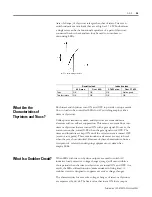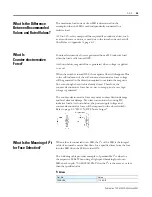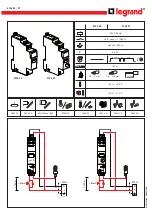
Publication 700-AT001A-EN-E June 2002
4-8
Q & A
Why Is the Minimum Load
Current for Most SSRs
Limited to 0.1 A?
Triac or transistor output elements have a minimum holding current.
Considering the ambient operating temperature, the minimum load
current based on the minimum holding current is 0.1 A.
If the load current is less than 0.1 A, the output element cannot
maintain the ON-status of the load. As a result, the output waveform
may oscillate or may not turn ON.
Usually, an SSR operating at 200 V has a maximum leakage current of
10 mA. To prevent load reset failures caused by the leakage current,
the minimum load current is limited to 0.1 A on the assumption that
the minimum reset current is 10% of the rated value.
Therefore, for example, if a load with a rated current of 50 mA is
used, the leakage current with the SSR turned OFF will be 20% of the
rated value. This may cause reset failures, depending on the load.
Why Can Most SSRs Not
Switch Micro-loads?
SSRs with AC Outputs
Presently, the minimum load current of most SSRs is limited to 100 mA
(0.1 A). At an ambient temperature of 25°C or higher, this value will
be a maximum of 50 mA. There are two reasons for this. One is for
the prevention of load reset failures that may be caused by current
leakage. The other is for the holding current required by each SSR in
operation.
A smaller micro-load can be connected to the SSR with a bleeder
resistor connected in parallel with the load.
Bleeder Resistor Values
SSRs with DC Outputs
The leakage current of an SSR may cause load reset failures.
If the maximum leakage current of the SSR is 0.1 mA, the SSR can
switch most micro-loads. Refer to the following table for bleeder
resistor values.
Bleeder Resistor Values
9$&
«N
Ω
:
9$&
«N
Ω
:
9'&
N
Ω
:
9'&
Ω
:
9'&
Ω
:
















































